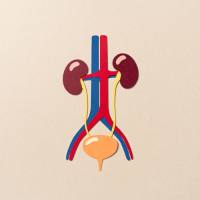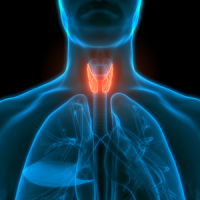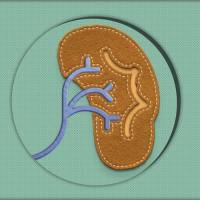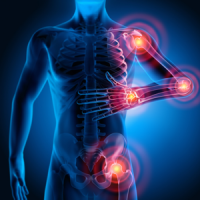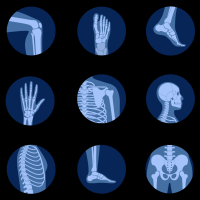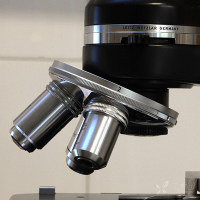预防医学的营养学 Nutrition in Preventive Medicine
这是一门医学院的课程。我会用一周左右的时间和大家分享。这是我业余时间的自学资料,欢迎分享讨论。
The Nutrition in Preventive Medicine Module has been made possible through the Nutrition Academic Award Program funded by the National Heart, Lung, and Blood Institute of the National Institutes of Health.
各个章节的参考资料见下
Introduction
Van Woerkum CM. Nutrition guidance by primary care physicians: models and circumstances. Eur J Clin Nutr 53 supp2:S19-21, 1999.
Moore H, Adamson AJ, Gill T, Waine C. Nutrition and the health care agenda: a primary care perspective. Fam Pract. 17:197-202, 2000.
Power ML, Holzman GB, Schulkin J. Knowledge and clinical practice regarding folic acid among obstetrician-gynecologists. Obstet Gynecol. 95:895-8, 2000.
Albrecht LJ. Paging Dr. Apple, Dr. Squash, Dr. Spinach...Patients' curiosity pressuring physicians to increase nutrition knowledge. Tex Med. 90:16-17, 1994.
Feldman EB. Nutrition concepts for the primary care/generalist physician. South Med J. 88:204-16, 1995.
Halsted CH. The relevance of clinical nutrition education and role models to the practice of medicine. Eur J Clin Nutr. 53 supp2:S29-34, 1999.
Feldman EB. Role of nutrition in primary care. Nutrition 16:649-51, 2000.
Walker AR. Dietary trends in the United States. N Engl J Med. 336:584-5. 1997.
Eshleman AM. Dietary trends in the United States. N Engl J Med. 336:583-4. 1997.
Section 1
American College of Sports Medicine (ACSM), American Dietetic Association (ADA), and Dietitians of Canada Position Stand: Nutrition Athletic Performance. Med Sci:Sports Ex 32(12) 2130-45, 2000.
Boutwell RK. Nutrition and carcinogenesis: historical highlights and future prospects. Adv Exp Med Biol. 369:111-23, 1995.
Barbul A. Immunonutrition comes of age. Crit Care Med. 28:884-5, 2000.
Campbell WW, Crim ML, Dallal DE, et al. Increased protein requirements in the elderly: new dataand retrospective reassessments. AJCN 60:167-175, 1994.
Kelley DS, Bendich A. Essential nutrients and immunologic functions. Am J Clin Nutr. 63:994S-996S. Review. 1996.
Dupont J, Holub BJ, Knapp HR, Meydani M. Fatty acid-related functions. Am J Clin Nutr. 63:991S-993S. Review. 1996.
American Society for Clinical Nutrition and American Institute of Nutrition. Position paper on trans fatty acids. ASCN/AIN Task Force on Trans Fatty Acids. Am J Clin Nutr. 63:663-70. Review 1996.
Zeisel SH. Choline: an essential nutrient for humans. Nutrition 16:669-71, 2000.
Dwyer H, Old wine in new bottles? The RDA and the DRI. Nutrition 16:488-92, 2000.
Monsen ER. Dietary reference intakes for the antioxidant nutrients: vitamin C, vitamin E, selenium, and carotenoids J Am Diet Assoc. 100:637-40,2000.
Nordin BC. Calcium requirement is a sliding scale. Am J Clin Nutr. 71:1381-3, 2000.
Rose VL. IOM recommends increased calcium intakes. Am Fam Physician. 57:1145-6 1998.
Bryant RJ, Cadogan J, Weaver CM. The new dietary reference intakes for calcium: implications for osteoporosis. J Am Coll Nutr. 18(5 suppl):406S-412S. Review. 1999.
Utiger RD. The need for more vitamin D. N Engl J Med. 338:828-9. 1998.
Valk EE, Hornstra G. Relationship between vitamin E requirement and polyunsaturated acid intake in man: a review. Int J Vitam Nutr Res. 70:31-42, 2000.
Park YK, Sempos CT, Barton, CN, Vanderveen JE, Yetley EA. Effectiveness of food fortification in the United States: the case of pellagra. Am J Public Health. 90:727-38, 2000.
Weisburger JH. Optimal daily intakes of micronutrients. Nutrition. 16:243-4, 2000.
Blumberg JB. Dietary reference intakes for vitamin E. Nutrition 15:797-9. 1999
Carr AC, Frei B. Toward a new recommended dietary allowance for vitamin C based antioxidant and health effects in humans. Am J Clin Nutr 69:1086-107. Review 1999.
Beyersdorf B, White JR. Sorting through the hype about RDA's. Postgrad Med. 105:36 1999.
Institute of Medicine Workshop on Folate, B12, and Choline. Sponsored by the Panel on Folate and other B vitamins of the Standing Committee on the Scientific Evaluation of Dietary Reference Intakes, Food and Nutrition Board, Institute of Medicine, Washington, DC, March 3-4, 1997.
Bailey LB. Dietary reference intakes for folate: the debut of dietary equivalents. Nutr Rev. 56:294-9. Review. 1998.
Klevay LM. Lack of a recommended dietary allowance for copper may be hazardous to your health. J Am Coll Nutr. 17:322-6. Review. 1998.
Aggett PJ, Fairweather-Tait S. Adaptation to high and low copper intakes: its relevance to estimated safe and adequate daily dietary intakes. Am J Clin Nutr. 67 (5 suppl):1061S-1063S. Review. 1998.
Booth SL, Suttie JW. Dietary intake and adequacy of vitamin K. J Nutr. 128:785-8. Review. 1998.
Nandi BK. Harmonization of recommended dietary allowances: implications and approach. Nutr Rev. 56:S53-6. Review. 1998.
Jacob A. Recommended dietary allowances: a nutrition practitioner's perspective. Nutr Rev. 56:S48-52. Review. 1998.
Schorin MD. Recommended dietary allowances: the industry perspective. Nutr Rev. 56:S45-7. Review. 1998.
Florentino RF. Recommended dietary allowances: regulatory perspectives. Nutr Rev. 56:S40-4. Review. 1998.
Lachance PA. Overview of key nutrients: micronutrient aspects. Nutr Rev. 56:S34-9. Review. 1998.
Yates AA. Overview of key nutrients: energy and macronutrient aspects. Nutr Rev.
Yates AA. Process and development of dietary reference intakes: basis, need, and application of recommended dietary allowances. Nutr Rev. 56:S5-9. Review. 1998.
Section 2
US Department of Agriculture, US Department of Health and Human Services: Nutrition and Your Health: Dietary Guidelines for Americans 4th ed. Hyattsville, MD, USDA's Human Nutrition Information Service, 1995.
Johnson RK, Kennedy E. The 2000 Dietary Guidelines for Americans: what are the changes and why were they made? The Dietary Guidelines Advisory Committee. J Am Diet Assoc. 100:769-774, 2000.
Helsing E. The history of nutrition policy. Nutr Rev. 55:S1-3. 1997.
Callaway CW. Dietary guidelines for Americans: an historical perspective. J Am Coll Nutr. 16:510-6. Review. 1997.
Byers T, Lyle B. The role of epidemiology in determining when evidence is sufficient to support nutrition recommendations. Summary statement. Am J Clin Nutr. 69:1365S-1367S. 1999.
Byers T. The role of epidemiology in developing nutritional recommendations: past, present, and future. Am J Clin Nutr. 69:1304S-1308S, 1999.
The role of epidemiology in determining when evidence is sufficient to support nutrition recommendations. Proceedings of a workshop Washington DC, USA. October 7-8, 1997. Am J Clin Nutr. 69:1297S-1367S. 1999.
Nestle M. Dietary guidelines for the year 2000: epidemiology in action. Nutrition 15:510-11. Review. 1999.
Potischman N, Weed DL. Causal criteria in nutritional epidemiology. Am J Clin Nutr. 69:1309S-1314S. 1999.
Mertz W. Three decades of dietary recommendations. Nutr Rev. 58:324-31, 2000.
Miller GD. Year 2000 dietary guidelines: new thoughts for a new millennium. Am J Clin Nutr. 71:657-8, 2000.
Lawrence M, Rayner M. Functional foods and health claims: a public health policy perspective. Public Health Nutr. 1:75-82, 1998.
Hardy G. Nutraceuticals and functional foods: introduction and meaning. Nutrition 16:688-9, 2000.
Mertz W. Food fortification in the United States. Nutr Rev. 55:44-9. Review 1997.
Cleveland LE, Moshfegh AJ, Alberston AM, Goldman JD. Dietary intake of whole grains. J Am Coll Nutr. 19supp3:331S-338S, 2000.
Kaplan NM. The dietary guideline for sodium: should we shake it up? No. Am J Clin Nutr. 71:1020-6, 2000.
McCarron DA. The dietary guideline for sodium: should we shake it up? Yes! Am J Clin Nutr. 71:1013-9, 2000.
Specker BL. Should there be a dietary guideline for calcium intake? No. Am J Clin Nutr. 71:661-4, 2000.
Heaney RP. There should be a dietary guideline for calcium. Am J Clin Nutr. 71:658-61, 2000.
Miller GD, Anderson JJ. The role of calcium in the prevention of chronic diseases. J Am Coll Nutr. 18(5 suppl):371S-372S. Review. 1999.
Krebs NF, Johnson SL. Guidelines for healthy children: promoting eating, moving, and common sense. J Am Diet Assoc. 100:37-9, 2000.
Kennedy E, Powell R. Changing eating patterns of American children: a view from 1996. J Am Coll Nutr. 16:510-16. 1997.
Groziak SM, Miller GD. Dietary guidelines for children: where are we heading? J Nutr. 128:1836-8. Review 1998.
Dwyer J. Should dietary fat recommendations for children be changed? J Am Diet Assoc. 100:36-7, 2000.
Lichtenstein AH. Dietary fat: a history. Nutr Rev 57:11-14 1999.
Lif****z F. Dietary guidelines with particular emphasis on nutritional intake of fat and cholesterol. J Am Coll Nutr. 16:507-9 1997.
Lichtenstein AH, Kennedy E, Barrier P, Danford D, Ernst ND, Grundy SM, Leveille GA, Van Horn L, Williams CL, Booth SL. Dietary fat consumption and health. Nutr Rev. 56:S3-28. 1998.
Schneeman BO. Dietary guidelines and complex carbohydrates. Adv Exp Med Biol. 427:51-3. Review. 1997.
Wolever TM, Jenkins DJ. What is a high fiber diet? Adv Exp Med Biol. 427:35-42. Review. 1997.
Krauss RM, Deckelbaum RJ, Ernst N et al. Dietary guidelines for healthy American adults. A statement for health professionals from the Nutrition Committee, American Heart Association. Circulation 94:1795-800. 1996.
Section 3
Expert Panel on Detection, Evaluation, and Treatment of High Blood Cholesterol in Adults: Summary of the second report of the National Cholesterol Education Program (NCEP) expert panel on detection, evaluation, and treatment of high blood cholesterol in adults (Adult Treatment Panel II) JAMA 260:3015-3023, 1993.
Schwartz ID Failure to thrive: an old nemesis in the new millennium. Pediatr Rev. 21:257-64, 2000.
Hall K, Whiting SJ, Comfort B. Low nutrient intakes contributes to adverse clinical outcomes in hospitalized elderly patients. Nutr Rev. 58:214-7, 2000.
Kelly IE, Tessier S, Cahill A, Morris SE, Crumley A, McLaughlin D, McKee, RF, Lean ME. Still hungry in hospital: identifying malnutrition in acute hospital admissions. QJM 93:93-8, 2000.
Butterworth CE. The skeleton in the hospital closet, 1974. Nutrition 10:435-441, 1994.
Young RC, Blass JP. Iatrogenic nutritional deficiencies. Annu Rev Nutr. 2:201-27, 1982.
Getchell WS, Svetkey LP, Appel LJ, Moore TJ, Bray GA, Obarzanek E. Summary of the Dietary Approaches to Stop Hypertension (DASH) Randomized Clinical Trial. Curr Treat Options Cardiovasc 1:295-300, 1999.
American Diabetes Association. Nutrition Recommendations and Principles for People with Diabetes Mellitus (Position Statement). Diabetes Care 23 supp1:S43-52, 2000.
Bruer RA, Schmidt RE, Davis H. Nutrition counseling-should physicians guide their patients? Am J Prev Med. 10:308-11, 1994.
Taubes G. Hypertension. A DASH of date in the salt debate. Science 288:1319, 2000.
Ladipo OA. Nutrition in pregnancy: mineral and vitamin supplements. Am J Clin Nutr. 72supp1:280S-290S, 2000.
Bailey LB. New standard for dietary folate intake in pregnant women. Am J Clin Nutr. 71supp5:1304S-7S., 2000.
Adams JF, Engstrom A. Helping consumers achieve recommended intakes of whole grain foods. J Am Coll Nutr. 19supp3:339S-344S, 2000.
Finn SC. In pursuit of a healthy diet: directions and detours. J Womens Health Gend Based Med. 8:455-8, 1999.
Bloch AS. Pushing the envelope of nutrition support: complementary therapies. Nutrition. 16:236-9, 2000.
Haddad EH, Sabate J, Whitten CG. Vegetarian food guide pyramid: a conceptual framework. Am J Clin Nutr. 70(3suppl):615S - 619S. Review 1999.
Levin A. Nutrition and policy 5: Who should teach patients about nutrition? Ann Intern Med. 131:317-8. 1999.
Levin A. Nutrition and policy 4: Dietary supplements. Ann Intern Med 131:161-3. 1999.
Levin A. Nutrition and policy 3: Food industry response to nutritional standards. Ann Intern Med. 130:1033-6. 1999.
Freide AI. Dietary supplements: background for dialogue between the industry and the medical profession. Food Drug Law J. 53:413-20 1998.
Russell RM, Rassmussen H, Lichtenstein AH. Modified Food Guide Pyramid for people over seventy years of age. J Nutr. 69:352-3 1999.
Nesheim MC. Dietary supplements. Nutrition. 14:729-30. Review. 1998.
Tripp F. The use of dietary supplements in the elderly: current issues and recommendations. J Am Diet Assoc. 97(10 suppl 2):S181-3. Review. 1997.
Oakley GP Jr. Eat right and take a multivitamin. N Engl J Med. 338:1060-1 1998.
Truswell AS. Practical and realistic approaches to healthier diet modifications. Am J Clin Nutr. 67: (3suppl):583S-90S. Review. 1998.
Glanz K. Behavioral research contributions and needs in cancer prevention and control: dietary change. Prev Med. 26(5 pt 2):S43-55. Review. 1997.
Haber B. The Mediterranean diet: a view from history. Am J Clin Nutr. 66(4 suppl):1053S-1057S. 1997.
Conner WE, Connor SL. Should a low-fat, high-carbohydrate diet be recommended for everyone? The case for a low-fat, high-carbohydrate diet. N Engl J Med. 337:562-3, 566-7. 1997.
Krebs-Smith SM, Cleveland LE, Ballard-Barbash R, Cook DA, Kahle LL. Characterizing food intake patterns of American adults. Am J Clin Nutr. 65 (4suppl):1264S-1268S. 1997.
Kumanyika S. Improving our diet-still a long way to go. N Engl J Med. 335:738-40. 1996.
Levine M. Fruits and vegetables: there is no substitute. Am J Clin Nutr. 64:381-2. 1996.
King AB. Nutrition labeling to prevent deficiency, promote health and avert toxicity. Nutrition 12:382-3. 1996.
Section 4
ACSM, ADA and Dietitians of Canada Position Stand: Nutrition and Athletic Performance (2000). Nutrition and Athletic Performance Medicine & Science in Sports & Exercise 32(12)2130-2145.
Charlotte Feicht Sanborn, Fact and Fat of Body Composition, In eds. J.R. Berning, S.N. Steen,: Sports Nutrition for the 90s, Maryland: Aspen Publishers, 1991.
American College of Sports Medicine(1998): Recommended Quality and Quantity of Exercise for Developing and Maintaining Cardiorespiratory and Muscular Fitness, and Flexibility in Healthy Adults. Medicine & Science in Sports & Exercise 30(6):975-991.
Physical Activity and Health: A Report of the Surgeon General Executive Summary. US Department of Health and Human Services. CDC. 1996. www.cdc.gov/nccdphp/sgr/pdf/execusumm.pdf
Sesso HD, Paffenbarger RS, Lee I. Physical activity and coronary heart disease in men: The Harvard alumni study. Circulation 2000;102:975-980.
Dunn AL, Marcus BH, Kampert JB, et al. Comparison of lifestyle and structured interventions to increase physical activity and cardiorespiratory fitness. JAMA 1999;281:327-334.
Andersen RE, Wadden TA, Bartlett SJ, et al. Effects of lifestyle activity vs. structured aerobic exercise in obese women; a randomized trial. JAMA 1999;281335-340.
US Department of Health and Human Services. Physical Activity and Health: A Report of the Surgeon General. Atlanta, GA: US Department HHS, CDC, National Center for Chronic Disease Prevention and Health Promotion, 1996.





